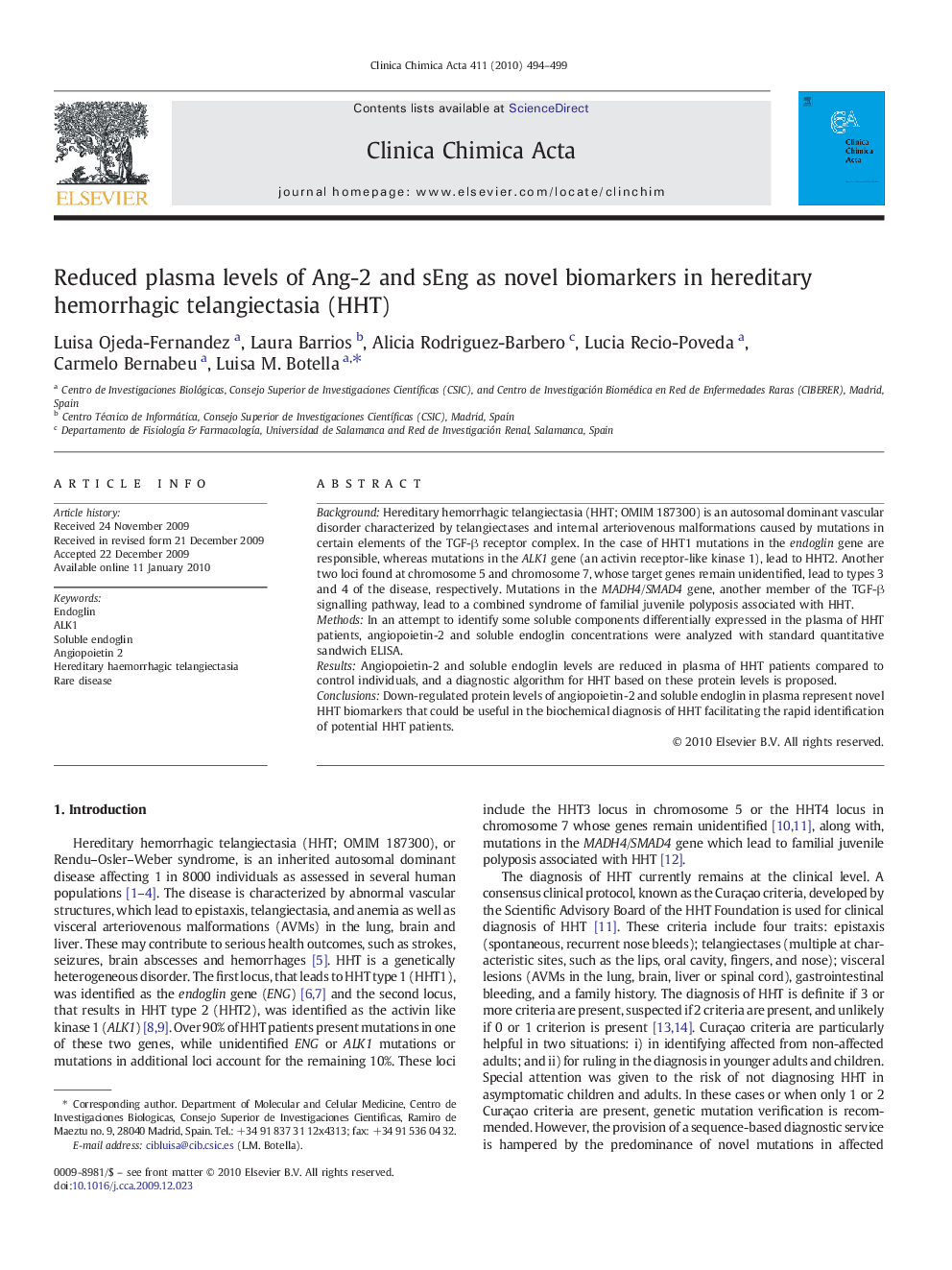| Article ID | Journal | Published Year | Pages | File Type |
|---|---|---|---|---|
| 1966232 | Clinica Chimica Acta | 2010 | 6 Pages |
BackgroundHereditary hemorrhagic telangiectasia (HHT; OMIM 187300) is an autosomal dominant vascular disorder characterized by telangiectases and internal arteriovenous malformations caused by mutations in certain elements of the TGF-β receptor complex. In the case of HHT1 mutations in the endoglin gene are responsible, whereas mutations in the ALK1 gene (an activin receptor-like kinase 1), lead to HHT2. Another two loci found at chromosome 5 and chromosome 7, whose target genes remain unidentified, lead to types 3 and 4 of the disease, respectively. Mutations in the MADH4/SMAD4 gene, another member of the TGF-β signalling pathway, lead to a combined syndrome of familial juvenile polyposis associated with HHT.MethodsIn an attempt to identify some soluble components differentially expressed in the plasma of HHT patients, angiopoietin-2 and soluble endoglin concentrations were analyzed with standard quantitative sandwich ELISA.ResultsAngiopoietin-2 and soluble endoglin levels are reduced in plasma of HHT patients compared to control individuals, and a diagnostic algorithm for HHT based on these protein levels is proposed.ConclusionsDown-regulated protein levels of angiopoietin-2 and soluble endoglin in plasma represent novel HHT biomarkers that could be useful in the biochemical diagnosis of HHT facilitating the rapid identification of potential HHT patients.
